Animal Kingdom
Biology is the discipline of science which
deals with the study of living organisms (or) life of an organism & their
characteristic features.
The life of animals originated at 3,
50,000 million years ago & at the same time about 1.5 million species were
named &described based on the taxonomy (classification).
Aristotle, who is popularly known as
father of Biology indicated that animals can be grouped and also classified them
bases on their habits and habitats.
In the same way number of scientists
classified the animals basing on their cells, nature of body
cavity,bio-chemical and physiological activities.
John Ray, the final person who made
an attempt to classify the animals basing on anatomical factors and also
introduced the Concept of Genus and species.
Characters
of living Organisms
·
Growth: Process of /developing/maturing in physically,
mentally & spiritually.
·
Metabolism: Process occurs within the living
organism to maintain the Life. Locomotion: Helps to move from one
place to another
·
Irritability: State of extreme sensitivity to
stimulation.
·
Reproduction: Production of off-springs by
sexual/asexual process.
Broad Classification
by Libbie Henrietta Hymann
Invertebrates: The animals which do not have the
back bone/ vertebral column.
Examples:
Insects: Houseflies, Mosquitoes, Butterflies
Snails/Slugs: Phaesianella australis, Maoricolpus roseus, Apple
snail, Ramshorn
Starfishes: Asteroida, Crinoidea, Echinoidea
Ø Phylum Protozoa
(diverse group of unicellular organisms)
·
Coined by the ‘Goldfuss’
·
Unicellular
nature of Protozoans : Von siebold
·
First observed by
‘Antony Von Leewenhoek’ named them
as’ animalcules’
General
characters:
·
Found in the
moist habitats.
·
Size: not visible
to the naked eye-1mm.
·
Shape: no cell
walls, so they have a infinite varieties.
·
Acellular/Unicellular
animals.
·
Symmetry:
Bilateral, radial, spherical.
·
Naked body,
enveloped by a pellicle.
·
Locomotion: by
cilia, pseudopodia, flagella.
·
Nutrition:
holozoic/halophytic/saprophytic/parazoic.
·
Digestion:
intracellular.
·
Respiration: by diffusion
(high to low concentration) through body surfaces.
·
Excretion:
through contractile vacuole.
· Reproduction:
sexual/asexual(fusion of gametes, binary fission, multiple fission) Simple and
most primitive animals
·
Osmoregulation:
Maintenance of constant osmotic pressure in the fluids of an organism by the
control of water and salts concentration.
·
Examples: Amoeba, paramecium, Euglena, chlamydomonas,
etc., 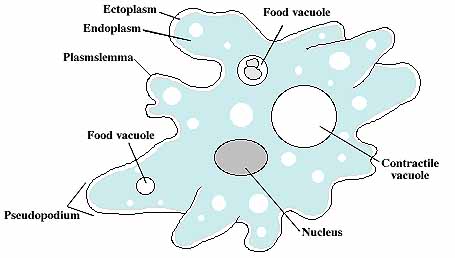
Ø Phylum Porifera (Primitive
multicellular animals which shows cellular level gradation)
·
Commonly called
as sponges/ pore bearers
·
Living nature of
sponges was established by ‘Ellis’
·
Sponges should be kept under sub kingdom Parazoa was
proposed by ‘Sollas’
·
Coined by ‘Robert Grant Edmond’
General
characters:
·
Solitary animals,
single: leucoselenia, colonies: spongila
·
Aquatic animals (
lives in fresh and marine water)
·
Size: 1.3-178cm
·
Shape: simple
with single outer layer( pinacoderm)
·
Symmetry: radial
or asymmetrical
·
Skeleton made by
spicules ( composed of CaCo3/ silicon)
·
Locomotion by
flagella
·
Nutrition:
through the pores on outer walls
·
Reproduction: Sexual
by union of eggs and sperms(M/F)
Asexual by buds and gemmules (internal buds)
·
Digestion:
intracellular
·
Life cycle: Parenchymula(solid ball), Amphiblastula
(oval) – larval stages
·
Exhibits water
vascular system/Water canal system canal system: Receives water through the
canal and circulates all over the body(Ostia and leaves spongila).
·
Examples: Euplectella, Sycon, Cilona, Scypha,
Euspongia, etc., 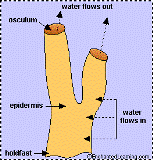
Ø Phylum Coelenterata/Cnidarians(multicellular
organisms with a tissue grade of organization)
·
Coined by ‘Leuckart’
·
Cnidarains and
acnidarains are separated by ‘Barnes’
·
Nature of this
developed by ‘Peyssonel and Trembly’.
General
characters:
·
The cells present
in this are cnidoblasts, stinging cells,
nematoblasts
·
Symmetry:radial
diploblastic animals
·
Size:
15-20cms(hydria)
·
Aquatic,
solitary/ colonial and food capturing
·
Digestion:
Extracellular. Intracellular, Respiration: by diffusion(body surface)
·
Excretion: with
the mouth for ingestion and egestion Anus is absent
·
Body walls
separated by ectoderm and endoderm – network by nerve cells
·
Many forms
exhibits polymorphism, generally occurs in two forms: polyp(non motile) and medusa
(motile) individuals are called ‘zooids’
·
Polyp: small
growth which begins with a stalk
·
Medusa: free
swimming.
Reproduction: Sexual by production of gametes &
asexual by budding
·
Life cycle:
Exhibits alternation of generation.
·
Larval stages:
Ephyra, Planula
·
Examples:Hydra,Obelia,Physalia,Aurelia,Pennetula. 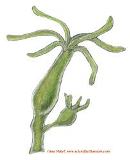
Ø Phylum Platyhelminthes/
Flat worms(shows organ system level organization)
·
Coined by Gegenbaur’
General characters:
·
Mostly aquatic/
few on moist lands, parasitic.
·
Size:
6-5ft(tapeworm).
·
Shape: flattened
dorso ventrally, unsegmented.
·
Symmetry:
bilateral, triploblastic.
·
Locomotion by
cilia.
·
Respiration: takes
oxygen( no formal respiration) .
·
Digestion: extracellular(only
with mouth) well developed mouth and anus.
·
Nervous system:
pair of anterior ganglia (nerve cells).
·
Reproduction: Hermaphrodites (testes and ovary in 1)
reproduce when it splits into two from one.
·
Larval stages: Miracidia,
Rediae, Cercariae.
·
Examples: Taenia solium, Turbellaria,, Ectoplena, Catenula.. 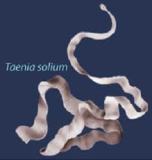
Ø Phylum Nematahelminthes/Nematodes/Round
worms(unsegmented and
pseudocoelomates animals)
·
Coined by ‘Geganbaur’.
General
characters:
·
Aquatic,
terrestrial, free living and mostly parasitic
·
Size: 4ft,
microscopic
·
Shape:
cyl;indrical, elongated and unsegmented at both ends
·
Body is covered
by a cuticle
·
Symmetry;
bilateral, triploblastic
·
Locomotion by long
muscles(1mm-1cm)
·
Respiration:
absent(takes oxygen)
·
Digestion:
extracellular
·
Excretion: through
anus
·
Reproduction:
sexes are separate
Male: hind end covered with cloaca
Female: hind end straight with anus.
·
Life cycle:
exhibits moulting in larval stages
·
Examples: Hook worm Eye worm, filarial worm . 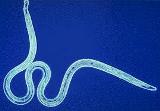
Continuation ...........Next file
| 




